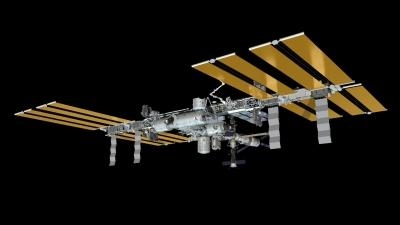Sun, Jul 12, 2015
Will Test The Effects Of Microgravity And Radiation On The Human Immune System
Anna-Sophia Boguraev from Bedford, N.Y., has been selected as the winner of the inaugural ‘Genes in Space’ competition, taking home the prize of designing one of the first autonomous DNA experiments to take place on the International Space Station (ISS). The experiment aims to test the effect of microgravity and cosmic radiation on the immune system in space. Boguraev (16) hopes to offer new avenues to enhance human health during prolonged spaceflight missions.

Genes in Space is a national contest inviting teachers and students to design experiments intended to solve real-life space exploration problems through DNA analysis. On Earth these experiments are conducted using a process called Polymerase Chain Reaction, which rapidly detects and analyzes DNA. The availability of miniPCR equipment now makes DNA studies in space possible. Organizers and sponsors devised Genes in Space as a means to inspire collaboration among students and scientists; create experimental designs testing cutting-edge hypotheses and show the possibilities and opportunities available to students pursuing careers in science, technology, engineering and mathematics.
Joining Boeing in supporting the Genes in Space competition are the Center for the Advancement of Science in Space (CASIS), Math for America (MƒA) and miniPCR. Boeing will prepare the equipment for launch; CASIS will provide a payload slot to the space station; and MƒA will serve as the education partner for the competition. Boeing is also providing equipment developed by miniPCR.
Five finalist teams, chosen from among 330 entrants, presented their proposals before a panel of scientists, educators and technologists at the ISS Research & Development conference, held July 7-9 in Boston and had miniPCR equipment donated to their educational institutions. Boguraev will have her experimental design carried out aboard the International Space Station. She will also travel to witness the experiment’s launch to the ISS.
“This is true a collaboration of industry partners to move technology and research forward while promoting STEM education and getting students excited about the possibilities of science in space,” said John Shannon, vice president and Space Launch System program manager at Boeing.
(Image from file)
More News
Aero Linx: Model Aeronautical Association of Australia MAAA clubs are about fun flying, camaraderie and community. For over 75 years, the MAAA has been Australia’s largest fl>[...]
Touchdown Zone Lighting Two rows of transverse light bars located symmetrically about the runway centerline normally at 100 foot intervals. The basic system extends 3,000 feet alon>[...]
“Discovery and innovation are central to our mission at Virgin Galactic. We’re excited to build on our successful record of facilitating scientific experiments in subor>[...]
How To Get A Story On Aero-TV News/Feature Programming How do I submit a story idea or lead to Aero-TV? If you would like to submit a story idea or lead, please contact Jim Campbel>[...]
Student Pilot Reported That During Rotation, “All Of A Sudden The Back Of The Plane Kicked To The Right..." Analysis: The student pilot reported that during rotation, “>[...]
 ANN's Daily Aero-Linx (05.02.24)
ANN's Daily Aero-Linx (05.02.24) ANN's Daily Aero-Term (05.02.24): Touchdown Zone Lighting
ANN's Daily Aero-Term (05.02.24): Touchdown Zone Lighting Aero-News: Quote of the Day (05.02.24)
Aero-News: Quote of the Day (05.02.24) ANN FAQ: Contributing To Aero-TV
ANN FAQ: Contributing To Aero-TV NTSB Final Report: Cirrus Design Corp SR20
NTSB Final Report: Cirrus Design Corp SR20



